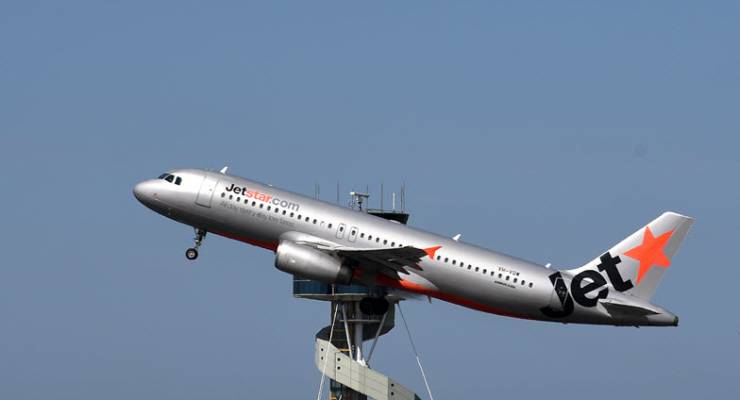
We’ve all been there. Stuck at an airport waiting for a flight that won’t turn up, wandering around the food court for the tenth time.
Yesterday, an outage affecting Australian Border Force terminals sparked delays across international airports as workers switched into manual mode. E-gates across the country were hit around 6am, although hour-long delays suggest Sydney Airport, already recovering from damaging winds and a fire, got the worst of it. Furious holidaymakers were stranded for hours.
At Brisbane airport however, delays were contained to around 15 minutes. Why the disparity? What creates delays and how are they managed? Crikey digs into the pesky world of airport delays.
Do bigger airports have more delays?
The most obvious explanation for the disparity between yesterday’s delays is the size of airports. While Sydney airport had 29,772 total aircraft movements in March this year, Brisbane had 17,898.
Sydney has more international flights, so it stands to reason that a 6am outage would create a bigger bottleneck.
But a closer look reveals that volume cannot be taken as the only factor for delays in general. In fact, weather is much more often the cause of delays than technical incidents, such as we saw yesterday.
Review the annual delays across all major airports and you get stranger results still. An analysis by finder.com.au found that in 2017 Sunshine Coast Airport was Australia’s most delayed airport, with nearly one third of all domestic flights not leaving on time. This was followed by Hobart at 27% of flights, Gold Coast and Launceston at 24% and Sydney at 19.7%.
Why do flights run late?
There are differences, obviously, between a delayed flight and a very, very delayed flight, but finder.com.au’s travel insurance expert Bessie Hassan noted that smaller airports are more sensitive to knock-on effects from other flights.
“Many routes send a single aircraft between two ports multiple times a day. If an inbound flight runs late, this affects passengers waiting to depart on that plane,” Hassan said. “It’s also important to note that an airport’s delay rate is rarely due to a lack of airport infrastructure, but instead more likely to be the result of poor weather or congestion elsewhere.”
The Airservices Australia Network Coordination Centre in Canberra is tasked with managing the day-to-day demand for Australia’s airspace and airports. When asked how delays across Australia are managed more broadly, a spokesperson for Airservices Australia explained flights are managed through daily meetings with airlines, airports and the Bureau of Meteorology to plan the next day’s operations.
Factors considered during these meetings include:
- The likely impact of forecast weather on which runways can be used
- How many flights those runways can handle
- How many flights airlines want to operate
- Significant events (such as ANZAC day or a major sporting events).
Is it an airline issue?
Data supplied to Fairfax last year by the Bureau of Infrastructure, Transport and Regional Economics showed that flights between Sydney and Melbourne were plagued with below-average performances for the year to February. Twenty four percent of southbound flights and 22% of those heading north arrived late across all airlines. This was, according to the bureau, the world’s second busiest air route, with 60,059 aircraft trips in 2017 demonstrating an increase by 12% over five years.
And, as anyone who’s ever flown Tiger can attest, airlines also have some responsibility over the matter: the airline took nine of the 10 top delayed services, as well as the most cancelled route of Sydney-Perth.
Of course, if there is further congestion, airlines can take steps to cancel flights and move passengers to different flights. While flights are not guaranteed by airlines to stick to schedules, Australians have some relatively decent avenues for compensation, which vary by whether delays are inside or outside an airline’s control.
How do we compare to the rest of the world?
This all speaks to the fact that, whatever the causes across delays in Australia, we have an exceptionally decent ecosystem. Save for elements like fog, winds and occasional haze from bushfires our environment is benign compared to countries like that not only have to deal with poor visibility from fog, typhoon seasons and overpopulation, but a military-controlled airspace.
Peter Renshaw, a lecturer at Swinburne University’s department of aviation, notes that China has made strides in finally opening up its airspace and plans to grow it further through initiatives like the Civil Aviation Administration of China 2050 action plan, largely “because they know its in their economic interest to do that”. Even then, the plan is significantly hamstrung by negotiations with the military.
Renshaw notes that, with conventional aircraft movements expected to double for Australia’s capital cities over the next 20 years, Australia’s airspace is changing at an unprecedented rate. He says there are three main factors driving change in Australia’s aviation industry: continuing growth in air traffic, infrastructure investment and the continuing acceleration of technological change.
This includes Airservices Australia implementing OneSKY — an ambitious $1.2 billion program “to harmonise civil and military air traffic management into one seamless system”. Renshaw says that it “will enhance safety while reducing flight times and delays for the travelling public”.
The Civil Aviation Safety Authority beginning a future redesign of Australia’s airspace to deal with not just increased volume but technological disruption from unconventional “manned” aircrafts — notably Uber — and the perpetually contentious issue of drones.









An obvious issue in the Australian context is the reliance on a relatively inflexible route plan whereby an interruption in one part of the chain has a ripple effect across the (almost) whole system. In the US on the other hand there are so many major destinations that interruptions in one spot can be worked around. If the Portland plane is cancelled for whatever reason then you might be able to use Seattle. If Frisco is down then try Sacremento. etc.
One thing really annoying about Aus airports is the lack of information for customers. I can’t count the number of times sitting in the terminal lounge knowing full well that the plane is delayed (because it’s not sitting there at the airwalk) and yet the passenger information shows that it’s boarding in 10 minutes.
I guess though as long as they stay safe we can put up with inconveniences.
One of the great vulnerabilities of the whizz-bang modern age, airports being the exemplars, is that when something quite minor goes wrong – a mouse deciding to try a new diet of wire insulation or a leaky roof – entire systems grind to a halt.